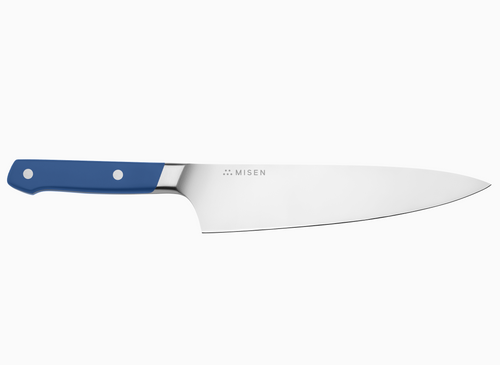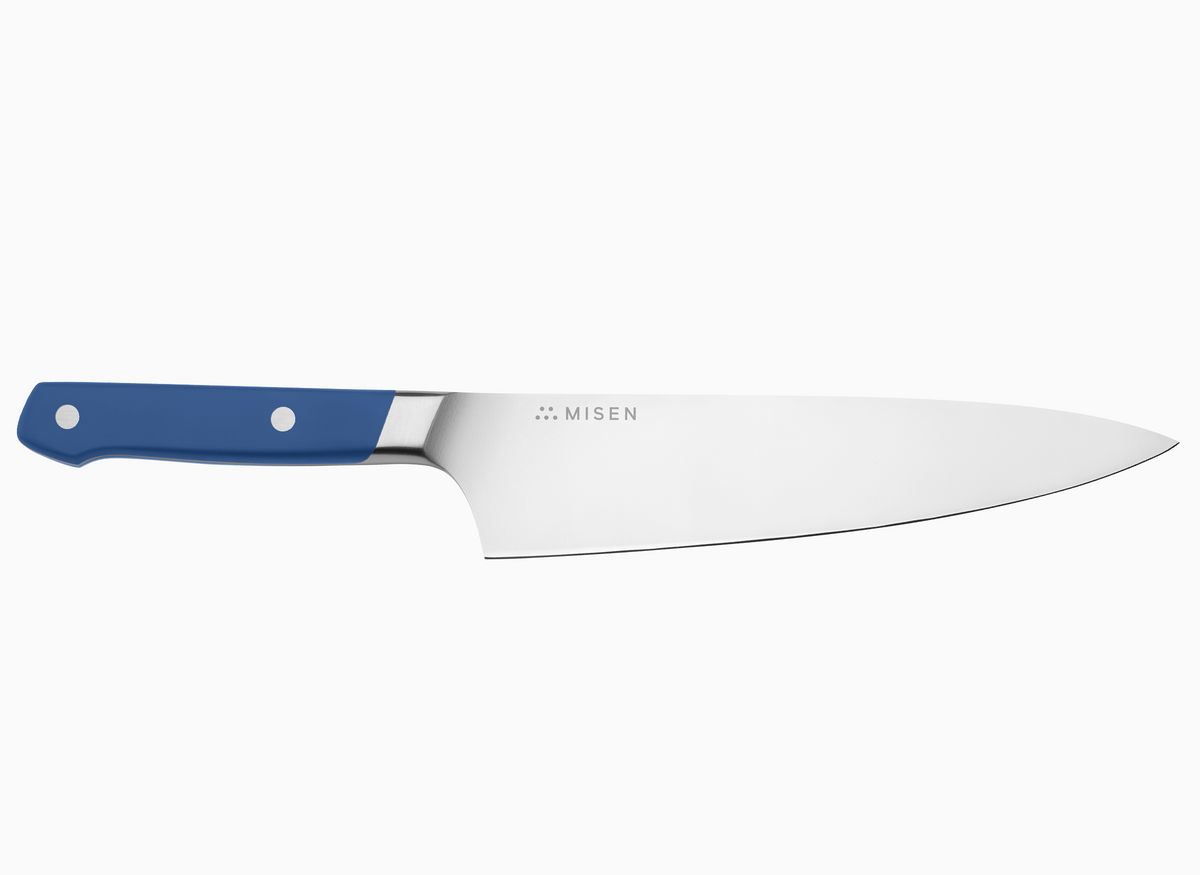How to Cut a Watermelon (Plus 3 Other Tricky Fruits)
 Watermelon is easy to slice with a chef's knife and a large cutting board.
Watermelon is easy to slice with a chef's knife and a large cutting board.
- Cutting your own fruit helps save money and retain more of the fruit’s nutritional value.
- All you need is a good chef’s knife and wooden cutting board to start slicing your own produce.
- Make sure to wash and dry your fruit before cutting. Then consume it within a few days.
These days, people are all for getting their five servings of fruits and vegetables a day — provided they’re washed, peeled, cut, and ready to eat. Luckily, this modern-day convenience is available almost everywhere you go. You can stock up on your week’s supply of pre-cut produce at the grocery store or grab a quick fruit cup from the nearest coffee shop.
While these do great in a pinch and are a healthy choice as far as packaged food goes, all this pre-cut fruit grazing will definitely set you back. Pre-cut fruits leave behind a lot of waste, are more prone to bacterial contamination, and lose nutritional value much quicker than their intact counterparts.
A fruit’s skin is its natural protection. Once broken, its delicate flesh is immediately exposed to oxygen and the antioxidant vitamins start breaking down.
Okay, so slicing a few strawberries or bananas into your morning cereal is no problem. But how about those 20-pound watermelons? Or prickly pineapples? Just seeing one of these formidable fruits is enough to send you back to your pre-cut ways.
Not to worry. All you need is a good quality knife, a cutting board, and the following tips to cut open even the trickiest fruits. Before you know it, you'll be biting into that juicy watermelon wedge (that you sliced!) in no time.
Preparing to Cut Fruit
The road to fruit-cutting success starts with a good chef's knife or paring knife — depending on the size of the fruit — and a large cutting board. Make sure your knife is sharp. Cutting through rind and thick peels is challenging, but you shouldn’t have to exert too much force to slice open a fruit.
It’s also important to have a stable work surface. This means a flat cutting board made from wood. Boards made from glass are rarely a good option — they’re bad for your knives and are difficult to use with round produce that rolls or juicy fruit that can make things slippery.
Finally, before making your first slice, remember to wash and dry all the fruits. You wouldn’t want the knife to pull any dirt from the skin into the flesh as you make your slices. Most people already do a quick rinse, but the extra step of drying the fruit will keep a nice, dry work space.
Watermelon
 Watermelon wedges are great for picnics and easy to eat with your hands.
Watermelon wedges are great for picnics and easy to eat with your hands.
Cutting a whole watermelon is daunting, given that the fruit is often larger than the cutting board itself. Thankfully, a lot of thought has gone into how to best crack open this fruit. We’ve narrowed it down to two methods — one that keeps the rind on as an easy-to-eat wedge, and one that completely removes the rind and leaves you with watermelon cubes (perfect for poke bowls and salads).
Watermelon Wedges
This first method is easier and a good starting point for those who are new to slicing fruit.
Begin by cutting the watermelon in half directly down the middle, and lay each half flesh-side down. Cut each side in half again, leaving the watermelon in quarters. Place one of the quarters horizontally across the cutting board and begin dividing it into 1-inch segments, creating wide triangles. Do this for the remaining three quarters until your entire watermelon is in wedges.
Watermelon Cubes
The second method requires a bit more time and skill. Trim an inch or two off the top and bottom of the watermelon (the ends with the “belly buttons”). This allows the fruit to stand on its own without rolling around.
In this position, start removing the watermelon rind by running your knife along the inner edge of the white portion. Follow the curve of the fruit, removing as little of the red flesh as you can and rotating the watermelon as you go. After a few turns, you’ll end up with a big ball of juicy red fruit.
Cut the ball of watermelon straight down the middle. Place one of the halves flat side down on the cutting board and start making vertical slices about 1–2 inches apart. Rotate the cutting board 90 degrees and slice again, creating a grid-like pattern. This will leave you with cut watermelon sticks. Lay the sticks on their side and slice them into cubes.
Pineapples
Although smaller in size, this tropical fruit is another one that many people find difficult to open. To make it less intimidating, start by simply cutting off the green spiky crown. Lay the pineapple on its side, holding the fruit securely with one hand, and slice off the crown half-an-inch below the leaves. Spin the pineapple around and chop off another half-inch from the bottom.
Now the pineapple can stand securely upright. In this position, slice the whole fruit, skin and all, down the center. Then, holding the 2 sides together, slice the whole fruit in half again to make quarters.
The next step is to remove the tough, fibrous core of the pineapple. Stand each quarter up and use your knife to remove about an inch from the center, slicing straight down.
Once all the core has been removed, slice each quarter in half again. This creates eight spears — the perfect size to easily remove the pineapple's skin. Place each piece skin side down. Glide the knife right along the inside of the skin and slice off as much fruit as possible. (The fruit next to the skin is the sweetest and juiciest).
You now have nice spears of juicy, yellow fruit. If there are any tough brown dots embedded on the flesh (called "eyes"), simply use a paring knife and make tiny v-shaped cuts to remove them. You can keep your pineapples as spears or slice them further into small, bite-sized chunks.
Mangoes
 When you score your mangoes, you can scoop out perfect cubes.
When you score your mangoes, you can scoop out perfect cubes.
Mangoes don’t seem like a hard fruit to open, until you try to do so without making a big, juicy mess. The smooth skin does not peel off as easily as an orange or avocado, and the large stone in the center makes it difficult to cut through.
To get the most meat from your mango, start with a mango that’s ripe but still firm. It should have a fragrant smell and yield a little when pressed. If the mango is too ripe, it will be difficult to cut but perfect for scooping out for shakes or juices.
Position the mango on the cutting board with the stem pointing either toward or away from you and the cheeks on either side. Using a knife, slice the mango lengthwise, about half-an-inch off center, to cut around the stone. Turn it around and repeat on the other side.
This leaves you with three parts: two fleshy cheeks and the middle section with the stone. Set aside the middle section for now, and place the two cheeks skin side-down.
Take one cheek and score along the length of the flesh, about every half inch, without cutting the skin. Turn it 90 degrees and score again to form a grid-like pattern. Do the same thing with the other cheek. To remove the fruit, take a large spoon and scoop out as much juicy flesh as you can.
You won't get as much fruit from the stone. But it still has fruit that you don’t want to let go to waste. So pare away the peel with your knife, and cut away as much flesh as you can. Alternatively, you can also eat the meat straight off the stone.
Pomegranates
Pomegranates don't need to be sliced in the same way other fruits do, but it's nearly impossible to get to the fragile seeds without getting stains all over your clothes and fingers. This method, using a bowl of water and a large spoon, prevents this from happening.
First prepare a bowl of clean, cold water. Then take your pomegranate and gently roll it around on a flat surface to help loosen the seeds.
Use a sharp chef’s knife or paring knife to score the fruit around the middle of the rind, being careful not to pierce all the way to the seeds. Wedge your thumbs into the cut you just made, and start gently breaking the pomegranate apart into halves. Submerge the pomegranate in water, cut side down, for a few minutes. The water will help soften the white pith so you can ease out the seeds.
Using the back of a spoon, strongly beat the outer pomegranate rind to release the seeds into the water. If there are any stubborn seeds left in the pith, use the spoon to gently wedge them out. Remove any pith from the pile of seeds and drain out the water.
Properly Storing Your Fruit
 Storing your sliced fruit gives you a healthy, grab-and-go snack throughout the week.
Storing your sliced fruit gives you a healthy, grab-and-go snack throughout the week.
Congratulations! You now have lots of delicious, ready-to-eat fruit. Remember to keep all your cut fruit properly sealed in an airtight container and eat it within 3–4 days of cutting it. If this is too much to consume, cut only the amount you need and store it with the rest of the fruit, covering the exposed flesh of the partially cut side in plastic wrap.
The Fruits of Your Labor
Preparing your own fruit has so many benefits, both financial and nutritional. You’ll be able to cut your budget by buying whole fruit and enjoy more of the antioxidants and vitamins each fruit has to offer.
It’s also immensely satisfying to be able to peel, cut, and slice your own snacks. With just a good quality knife and your newfound knife skills, you can now enjoy a variety of fruit whenever you please.








